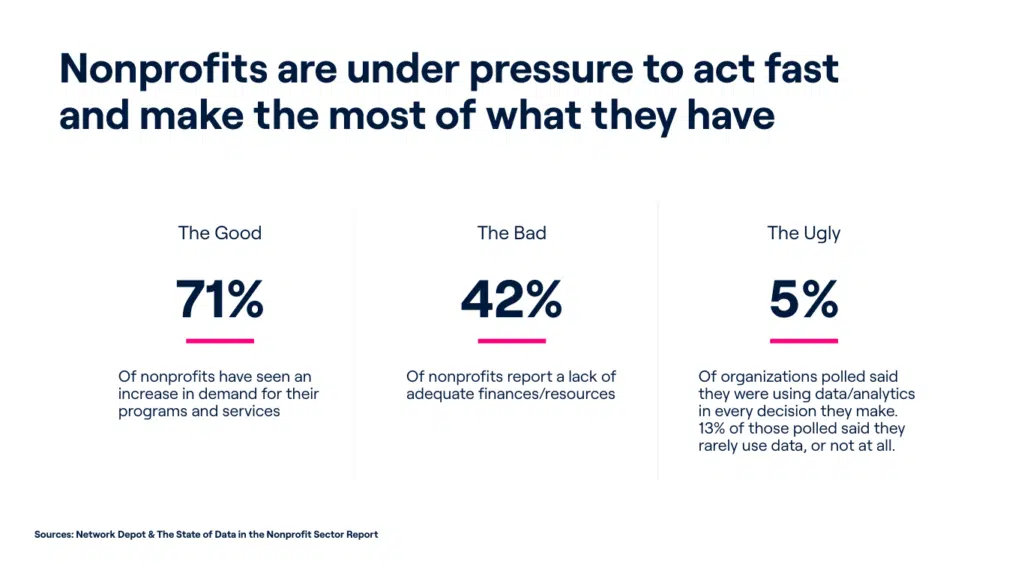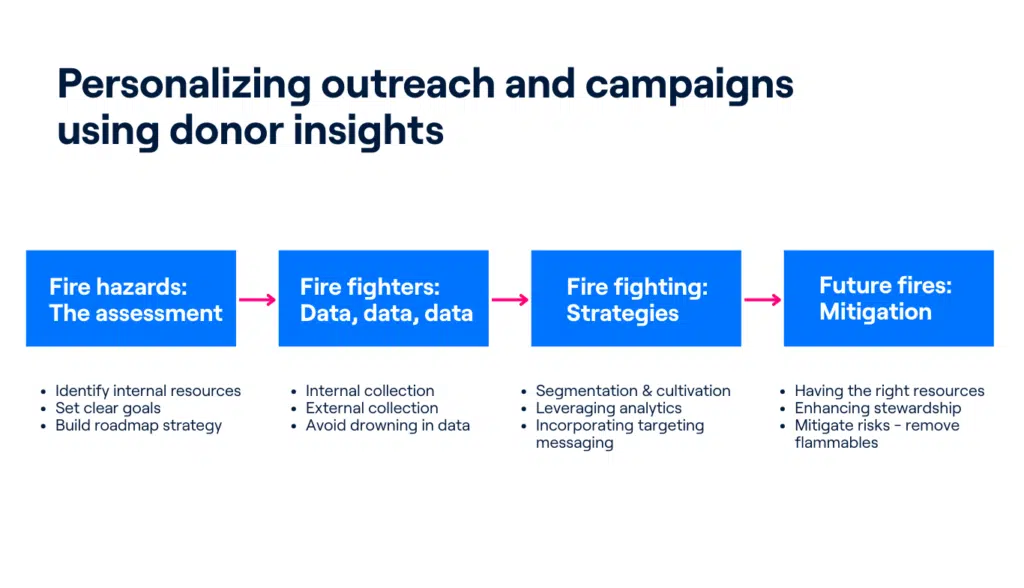Understanding fundraising burnout and how to prevent it
As someone who has spent years working with nonprofits of all sizes, I’ve experienced firsthand how easily passion, even for a worthy cause, can turn into burnout. During my recent presentation at AFP (Association of Fundraising Professionals) Icon’s Conference in Seattle, I noticed a common thread among fundraisers: many of them were dedicated but totally exhausted emotionally and relationally. Do I have a silver bullet that solves all your problems when it comes to feeling worn down from repeatedly looking for deeper donor engagement? No, but I do think there are some simple steps we can take to turn down the heat of our fundraising fires, avoid burnout, and push for the causes we all still believe in.
The rising pressure on fundraisers and why traditional methods fall short
Fundraising has always been demanding, but the stakes feel like they’ve increased in recent years. More nonprofits are competing for the same donor dollars, and the fatigue is real on both sides. Donors are swamped with requests, and nonprofit teams often feel trapped in endless cycles of outreach. Traditional methods simply don’t deliver the same return on effort that they used to.
In fact, during our session, I highlighted a stark statistic: only around 5% of nonprofits regularly use analytics to guide their strategies. This means the vast majority are relying on intuition or legacy approaches, which often leads to wasted resources, frustration, and eventual burnout.

Why does donor engagement strategy need a data-driven approach?
Fundraising teams know they need to be strategic, but vague intuition and guesswork no longer cut it. Donors today expect personalized communication and relevant outreach tailored specifically to them. This level of personalization can only realistically happen at scale through good, clean data.
But beyond just personalization, data-driven fundraising helps you clearly identify and prioritize prospects. By knowing who has the interest, ability, and inclination to give, you significantly reduce wasted time chasing unlikely leads. Good analytics don’t just show you numbers, they provide clarity and direction, helping you avoid spinning your wheels and burning out.
How donor data transforms engagement and retention
One particularly effective example I shared during the session was about donor recognition events. A well-run event is often a turning point for donor relationships, but only if the right donors are invited and engaged effectively. I’ve personally seen nonprofits use precise donor insights, demographic data, giving capacity, interests, and behaviors, to tailor their events to the right audience.
The results speak for themselves: more meaningful engagement, increased retention rates, and deeper, long-lasting relationships with donors. Precise insights don’t just inform your strategy; they transform your entire approach from generalized mass mailings into targeted, meaningful interactions.
From exhaustion to efficiency: prioritize donor engagement with data
Burnout often stems from feeling overextended, chasing too many prospects with too few results. Data-driven fundraising directly addresses this issue. Using analytics, fundraising teams can identify which donors are truly engaged, where to best invest resources, and how to structure achievable goals.
The real-world impact here is significant. Instead of feeling overwhelmed, teams can proactively organize outreach, set clear expectations, and easily track their progress. Rather than trying to reach everyone, you can prioritize engagement. Frankly, as people, we only have so much to give and viewing our relationship reservoir as a resource can help us be better stewards of our own health.
With the right tools and insights, you can confidently drive the mission forward, without it coming at your team’s expense.
Practically speaking, predictive analytics can help you identify likely major donors early or highlight those lapsed donors who might be ready to re-engage. Data enrichment tools reduce the frustration of manual research (and other draining tasks) so you can redirect your energy toward meaningful interactions and genuine relationships with donors, which is probably why you got into non-profit work in the first place.
Additionally, what this data allows you to do is set manageable, achievable goals. Making progress on those goals has a big impact on morale and motivation, which ultimately can make a huge difference when feeling burned out. It’s the difference between swimming to stay afloat and swimming to break your new lap record.
Common “firefighting” issues in data
While most fundraisers recognize the potential of data and insights, adopting an insight-driven strategy isn’t always straightforward. During our session at AFP ICON, we explored the most common reasons organizations struggle to fully utilize the data at their fingertips:
- Limited resources: One of the hardest challenges for nonprofits is resource constraints and technology gaps. Smaller organizations especially deal with limited IT and analytics expertise and bandwidth. This makes it difficult for organizations to implement modern data solutions.
- Lack of data literacy: Even when data is available, many teams don’t have dedicated staff to interpret and act on it, or they fall into “data paralysis,” unsure what to do with too much information and too little direction.
- Data silos and integration issues: With data often scattered across CRMs, email platforms, donation tools, and spreadsheets, getting a unified view of a donor can feel like a full-time job.
Teams can get bogged down, burned out, and miss the opportunity to act on the information they already have. That’s why insight adoption requires more than just tools. It requires structure, clarity, and alignment across teams.
Four steps to smarter fundraising: fighting fundraising fires with donor insights
To fight fundraising fires effectively, you need more than a hose; you need a strategy. Here’s my simple, four-step approach that fundraisers can use to turn insights into action:
- Fire hazards – The assessment:
Start by identifying your internal resources, setting clear goals, and building a strategic roadmap. This helps you understand what you’re working with and what’s getting in the way. - Firefighters – Data, data, data:
Collect the right information, but be mindful of overload. Avoid drowning in dashboards. Focus on collecting the data that connects directly to your goals. - Fire fighting – Strategies:
Apply segmentation and targeting to your campaigns. Use analytics to guide your timing and messaging. Personalization at this stage turns a generic campaign into a meaningful interaction. - Future fires – Mitigation:
Once your strategy is in motion, focus on long-term resilience. That includes stewardship planning, proper resourcing, and risk mitigation, or as I call it, “removing the flammables.”

Turn down the heat and unlock your fundraising potential with the right donor insights
Fundraising burnout isn’t inevitable. Embracing analytics and insights can fundamentally transform how fundraising feels and performs.

Ultimately, data-driven fundraising isn’t about complicating your approach but simplifying and clarifying it. With the right tools and insights, you can confidently drive the mission forward, without it coming at your team’s expense.
Want to see how Altrata can help you harness powerful insights for more strategic fundraising?
Schedule your team’s demo today.